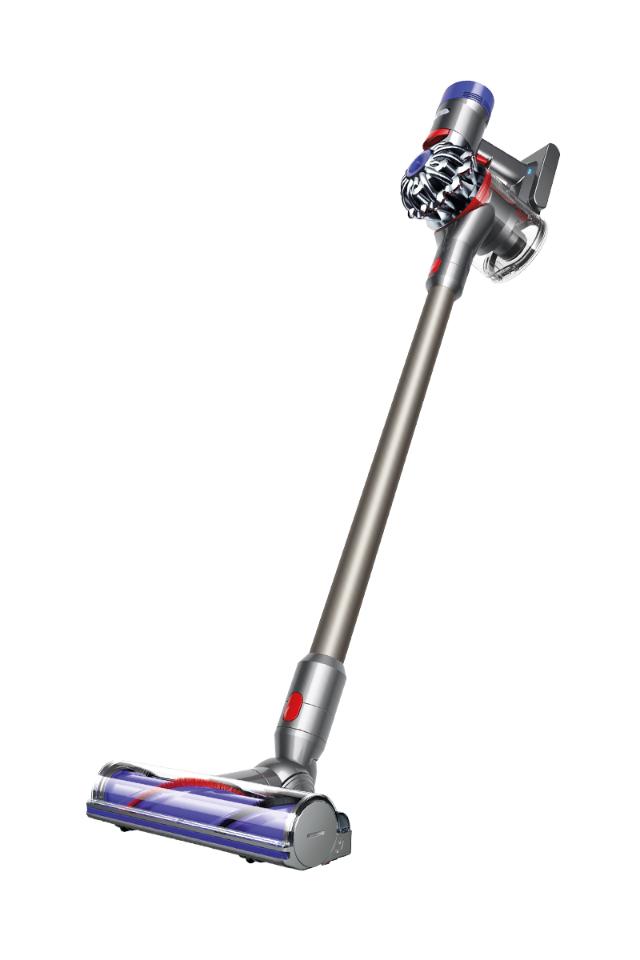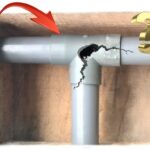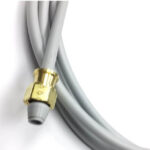Vacuum issues can be frustrating. Especially with a Dyson V6 Animal.
The Dyson V6 Animal is a powerful, popular vacuum. But like any device, it can face problems. Whether it’s losing suction, battery issues, or strange noises, troubleshooting is key. Understanding common problems and their solutions can save you time and money.
This guide will help you identify and fix common issues. Learn how to keep your Dyson V6 Animal running smoothly. Let’s dive into some practical tips and solutions for your vacuum troubles.
Power Issues
Experiencing power issues with your Dyson V6 Animal can be frustrating. Common problems include the device not turning on or the battery not charging. These issues can often be resolved with simple troubleshooting steps. Let’s explore some solutions for these power problems.
Device Not Turning On
If your Dyson V6 Animal does not turn on, first check the battery. Ensure it is fully charged. Insert the battery properly into the vacuum. If the battery is charged and inserted correctly, but the device still won’t turn on, inspect the power button. Sometimes, dust or debris can block the power button, making it unresponsive. Clean around the button and try again.
Next, check the power cord and charger. Ensure they are not damaged. A damaged cord can prevent the device from charging or turning on. Replace any damaged parts. If the device still does not turn on, the problem might be internal. Contact Dyson support for further assistance.
Battery Not Charging
If the battery is not charging, start by checking the charger. Plug it into a different outlet. Sometimes, the outlet may be the issue. If the charger works in another outlet, the problem is solved.
Inspect the charging port on the device. Dust or debris can block the connection. Clean the port gently with a dry cloth. If the charger and port are clean but the battery still does not charge, test the battery with another compatible device. If it charges with the other device, the issue might be with the vacuum. If not, the battery may need replacement.
Ensure the battery clicks into place when inserted. A loose connection can prevent charging. If the battery is properly connected but still won’t charge, it might be faulty. In this case, consider purchasing a new battery or contacting Dyson support.

Credit: www.ifixit.com
Suction Problems
Experiencing suction problems with your Dyson V6 Animal can be frustrating. Proper suction is key to your vacuum’s performance. In this guide, we will explore common issues and solutions.
Weak Suction
Weak suction can result from various causes. Start by checking the following:
- Ensure the bin is emptied.
- Inspect the filter for dirt. Clean it if needed.
- Check the brush bar for tangled hair or debris.
Blockages In The System
Blockages can severely impact suction. Follow these steps to clear any blockages:
- Disconnect the vacuum from the charger.
- Detach the wand and check for blockages.
- Inspect the main body and bin inlet.
- Clear any debris using a thin object.
Use this simple table to track common blockage points:
| Component | Possible Blockage Location |
|---|---|
| Wand | Inside the length of the wand |
| Bin | Bin inlet |
| Main Body | Inlet and cyclone |
Regular maintenance can prevent these issues. Clean your vacuum parts frequently. Keeping the components clear ensures optimal suction power.
Brush Bar Malfunctions
The Dyson V6 Animal is a powerful vacuum cleaner designed for households with pets. But, sometimes you might face issues with the brush bar. This section will help you troubleshoot common brush bar malfunctions. Let’s dive into the details.
Brush Bar Not Spinning
If your brush bar is not spinning, there could be several reasons. Here are the steps to diagnose and fix the issue:
- Check for blockages: Turn off and unplug the vacuum. Inspect the brush bar and remove any debris.
- Inspect the belt: A worn or broken belt can stop the brush bar from spinning. Replace if necessary.
- Test the motor: Ensure the vacuum is fully charged. If the motor is not working, it may need professional repair.
Cleaning The Brush Bar
Regular cleaning of the brush bar ensures optimal performance. Follow these steps to clean your Dyson V6 Animal brush bar:
- Turn off and unplug: Safety first. Always unplug the vacuum before cleaning.
- Remove the brush bar: Use a coin or a screwdriver to unlock the end cap and slide out the brush bar.
- Clean the brush bar: Use scissors to cut away hair and threads. Wipe down the bar with a damp cloth.
- Reassemble: Once cleaned, reinsert the brush bar and secure the end cap.
Regular maintenance of the brush bar not only ensures better performance but also extends the life of your Dyson V6 Animal.

Credit: www.youtube.com
Filter Maintenance
Maintaining your Dyson V6 Animal’s filter is crucial. It ensures optimal performance and extends the vacuum’s life. Regular filter checks prevent blockages and loss of suction. This guide covers the essential steps for filter maintenance.
Cleaning The Filter
First, switch off and unplug your Dyson V6 Animal. Remove the filter from the vacuum. Typically, this is located at the top of the cyclone assembly.
Rinse the filter under cold water. Do not use any detergent. Squeeze and twist the filter to remove excess water. Repeat this process until the water runs clear.
Let the filter dry for 24 hours. Ensure it is completely dry before placing it back in the vacuum. This step is vital. A wet filter can damage the motor.
Replacing The Filter
If the filter shows signs of wear or damage, it is time for a replacement. Purchase a genuine Dyson V6 Animal filter for best results.
Remove the old filter as you would for cleaning. Insert the new filter into the same slot. Ensure it fits snugly and securely. This ensures proper filtration and airflow.
Check the filter condition every month. Replace it every 6-12 months for optimal performance. Regular replacement keeps your vacuum working efficiently.
Overheating Issues
The Dyson V6 Animal is a powerful vacuum cleaner. But sometimes, it can overheat. Overheating can lead to performance issues. Understanding the signs and cooling methods is crucial. This guide will help you address these issues effectively.
Identifying Overheating Signs
Recognizing the signs of overheating is the first step. Look out for these symptoms:
- Reduced suction power: The vacuum may lose its usual strength.
- Unusual noise: A loud or strange noise can indicate a problem.
- Burning smell: Any odor of burning is a clear warning sign.
- Automatic shutdown: The vacuum turns off by itself to prevent damage.
If you notice any of these signs, it’s time to take action.
Steps To Cool Down
Follow these steps to cool down your Dyson V6 Animal:
- Turn off the vacuum immediately. Unplug it from the power source.
- Check for blockages. Remove any debris from the filters and hoses.
- Let the vacuum rest for at least 30 minutes. Allow it to cool down completely.
- Inspect the filter. Clean or replace it if necessary.
- Ensure all vents are clear. This will help with proper airflow.
After following these steps, your vacuum should function properly again. Regular maintenance can prevent future overheating.
Noise Concerns
Experiencing noise issues with your Dyson V6 Animal? These concerns can be frustrating. Understanding the source of the noise and how to fix it can help. Let’s dive into common noise problems and solutions.
Unusual Noises
Is your Dyson V6 Animal making strange sounds? This could mean a blockage. It may also indicate that parts need cleaning. Sometimes, it’s a sign of a worn-out part. Identifying the noise type is crucial. Is it a high-pitched sound? A rattling noise? Each has different implications.
Fixing Noise Issues
Firstly, check for blockages. Look at the brush bar and hose. Remove any debris. If the noise continues, inspect the filters. Dirty filters can cause unusual sounds. Clean or replace them if needed.
Next, examine the motor. Worn-out motors often make loud noises. If you suspect motor issues, professional help may be required. Regular maintenance is key to avoiding these problems. Always keep your vacuum clean and parts in good condition.
Additional Tips
Maintaining your Dyson V6 Animal vacuum cleaner can seem challenging. With the right tips, you can keep it running smoothly. Follow these additional tips to ensure your vacuum performs at its best.
Regular Maintenance
Regular maintenance is key. Empty the dustbin after each use. This prevents clogs and maintains suction power. Check the filter once a month. A clean filter ensures your vacuum works efficiently. Wash the filter with cold water. Let it air dry for 24 hours before reinstalling.
Inspect the brush bar for tangled hair. Cut away any debris with scissors. Ensure the brush bar spins freely. This helps the vacuum pick up dirt better. Also, check the hose for blockages. Clear any debris you find to maintain airflow.
When To Seek Professional Help
Sometimes, regular maintenance is not enough. If your vacuum loses suction, seek professional help. A technician can diagnose the issue. They can replace parts if needed.
Unusual noises are another sign. If your vacuum makes strange sounds, contact a professional. This could indicate a motor issue. Professionals have the tools to fix it.
Finally, if your vacuum overheats, stop using it. Overheating can cause damage. Let a professional check it out. They can ensure your vacuum is safe to use.

Credit: www.dyson.com
Frequently Asked Questions
Why Is My Dyson V6 Animal Not Turning On?
Check if the battery is fully charged. Ensure connections are secure. Clean the filter.
How Do I Clean The Dyson V6 Animal Filter?
Remove the filter. Rinse under cold water. Let it dry completely before reinserting.
Why Is My Dyson V6 Animal Losing Suction?
Check for blockages in the hose and brush bar. Clean the filters regularly.
How Often Should I Replace The Dyson V6 Animal Battery?
Replace the battery every 3-4 years, depending on usage. Check for reduced performance.
What To Do If The Dyson V6 Animal Brush Bar Stops Spinning?
Clear hair and debris from the brush bar. Ensure no blockages. Check for wear and tear.
Conclusion
Troubleshooting your Dyson V6 Animal is easier than you think. Follow the steps carefully. Regular maintenance prevents most issues. Clean filters and check for blockages. Replace parts if necessary. Keep your vacuum running smoothly. With these tips, you can resolve common problems.
Enjoy a cleaner home with less effort. Happy vacuuming!




